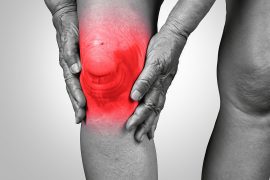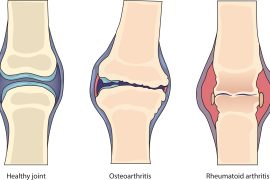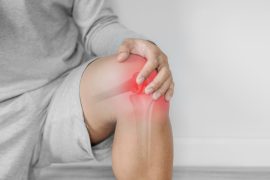Introduction
Artificial Intelligence (AI) has become an integral part in technological advancement in healthcare. AI significantly impacts many areas of the healthcare ecosystem, from prevention to diagnosis and treatment. Orthopedics, among all branches of medical specialties, is an area where surgeons have an array of new tools and assistants in the form of robots. Even though research is still around the success rate and superiority of robotic replacement surgery, the tech adoption has been very swift and global. Very soon, we will see exponential growth in robotic-assisted replacement surgeries that will outnumber manual knee replacement surgeries in a very short time. Patient concerns are mainly related to the procedure, recovery time, safety, costs, etc.
What is Joint Replacement?
Joint replacement is a specialized procedure where artificial joints are implanted in patients with rheumatoid arthritis or osteoarthritis. It has been used as a solution for joint damage, especially in older people with osteoporosis and those who are injured frequently. This surgery is also effective in treating people with arthritis or arthritis associated with other joint diseases like polytraumatic arthritis or psoriasis. Some of the most common joints that are replaced include the hip, knee, and ankle joints. Joint replacement can be used to treat pain and restore function after a joint has been severely injured or due to a chronic joint disease such as rheumatoid arthritis or osteoarthritis. Artificial joints can be made from various materials, including metal alloys, plastic, and bio-implants like ceramic and polyethylene. This article will discuss the future of joint replacement and AI, why it’s important, and what can be done to improve it?
Impact of AI in Joint Replacement Surgery
In joint replacement surgeries, robots typically assist with pre-surgery planning, intraoperative execution, monitoring and assessing complications, and any short-term or long-term outcomes. Robotic assistance in such surgeries can expand to using the computer vision model, sensors application, and feedback and loop execution, all of which will greatly help the surgeon for technical precision.
Robotics with imaging is frequently used for 3D reconstruction, comparison of bone registration and ligament evaluation, performing bone resection, and collecting feedback. This leads to fewer mistakes and less damage to the soft tissues of the knee, as well as betters the implant alignment and corrects any flexion-extension gap and gap asymmetry. The fact that it predicts patient outcomes is an exciting prospect for both the patient and the surgeon. It promotes efficiency and faster healing times, improves precision and accuracy, personalizes patient care, and results in fewer complications. AI helps in surgical decision-making and eliminating risk factors and human-driven errors.
How can AI improve Joint Replacement?
AI can use genetic data to help select the best type of joint replacement for each patient. This would help reduce the number of patients who receive incorrect treatment, helping to improve the overall quality of care. AI can also be used to help doctors identify when a patient is at risk of developing a dangerous complication. This could include monitoring the health of a patient’s joint to identify any potential problem, like excessive wear on the joint.
The Future of Joint Replacement and AI
There is a constant effort to improvise the technology, learn from mistakes, and adapt to ensure that AI tools support surgeons with precision in their medical decisions and reduce human error. We are looking at a future with next-generation robots with advanced machine-learning algorithms capable of performing replacement surgeries with minimal human intervention. The impact of AI on the targeted segment will be huge as well. One area that can benefit from AI is joint replacement.
Conclusion
Artificial joints/ Implants have been used for a long time now. The future of joint replacement, however, could be very interesting. AI could significantly improve the treatment of joint damage by automating a larger part of the process. This would allow doctors to spend more time on actual diagnosis and treatment, leaving less time wasted on administrative tasks. Patients who undergo joint replacement would be able to receive an AI-integrated treatment, like a virtual or augmented reality (VR/AR) treatment. AI could also be used to help select the right type of joint replacement for a patient based on their genetic profile. Researchers are focusing on newer technology for designing implants for joint replacement with advanced and more biocompatible material. The results of these studies can be helpful for the future of joint replacement.




Comments are closed.